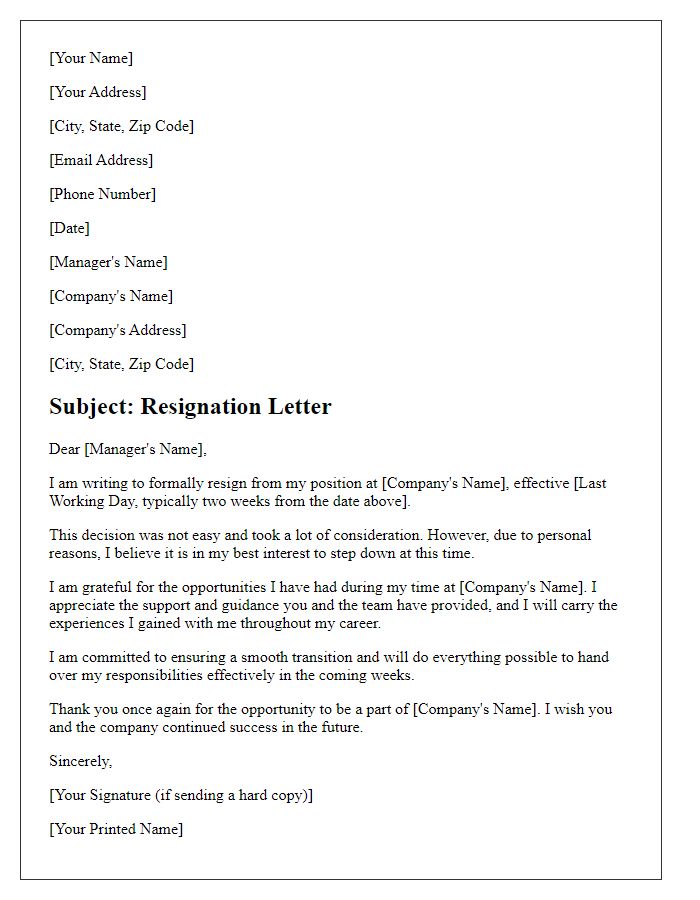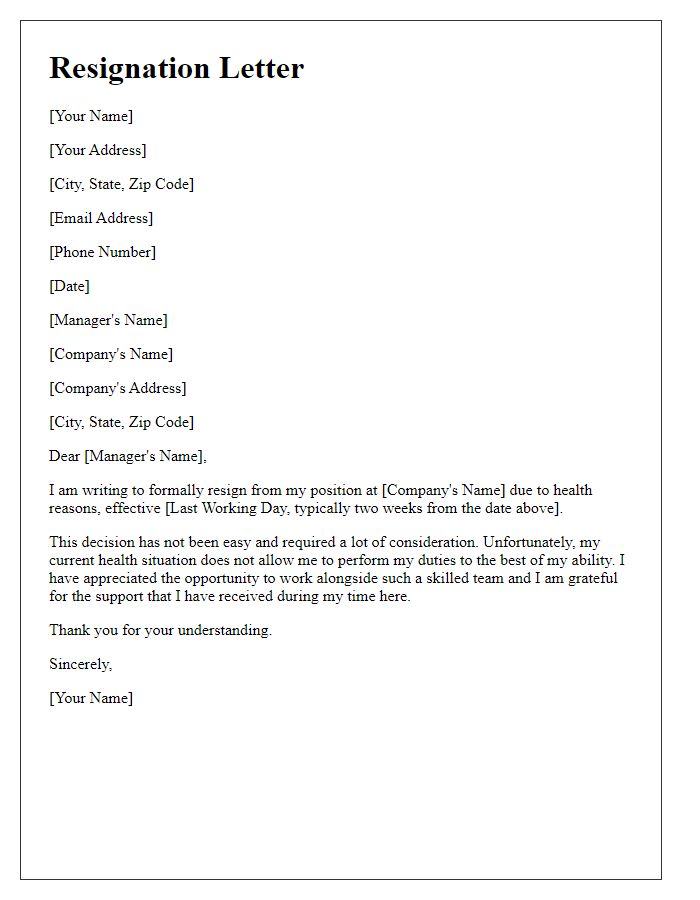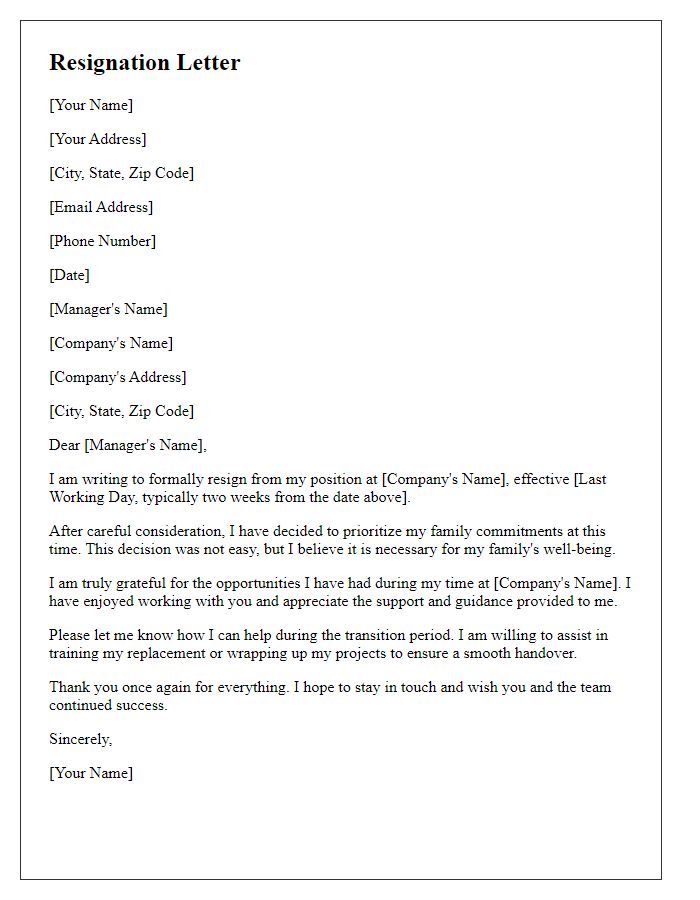Are you thinking about stepping away from your current job but unsure how to go about writing a resignation letter? Crafting the perfect resignation letter can be daunting, especially when you're not transitioning to a new position right away. It's important to ensure your letter conveys professionalism and gratitude, no matter your circumstances. Ready to learn how to write an effective resignation letter without future job offers? Keep reading for tips and a template to help guide you!

Professional tone and language
Resignation from a position entails drafting a formal document that communicates intent to leave the current role. A well-structured resignation letter typically includes the employee's name, current job title, and company name, followed by a clear statement of resignation. Ideally, it encompasses the last working day, which is often two weeks from the date of submission, aligning with the company's standard notice period. Acknowledgment of experiences and gratitude for opportunities provided by the organization is essential. Highlighting valuable skills gained can foster positive relations. Expressing willingness to assist during the transition period enhances professionalism. Ending with a polite closing reiterates the intent to maintain respectful connections. Maintaining a professional tone throughout solidifies a positive departure from the company.
Clear resignation statement
Submitting a resignation notification is important for maintaining professionalism. A clear resignation statement should include the position title, the date of resignation, and an expression of gratitude for the experience gained. For instance, an employee may state, "I resign from my position as Marketing Manager, effective two weeks from today." This provides appropriate notice to the employer, allowing for a smooth transition. Additionally, expressing gratitude conveys appreciation for opportunities, skills development, and relationships built during employment. Ending on a positive note can foster goodwill despite the resignation.
Notice period specification
A resignation is a formal act that often involves the submission of a letter to notify employers of an employee's intention to leave their position. In this situation, an employee resigns without securing future job offers, starting with a specified notice period. Typically, this notice period can vary depending on company policies, commonly ranging from two weeks to one month. The resignation letter should include essential details such as an official statement of resignation, the intended last working day based on the notice period, and expressions of gratitude for the opportunities gained during employment. Additionally, this letter may also mention the willingness to assist with the transition period to ensure a smooth handover of responsibilities.
Expression of gratitude
Resigning from a position after a fulfilling tenure can be both significant and emotional for many employees. Individuals often feel the urge to express gratitude towards colleagues and management for the experiences gained and support received during their time. This is particularly important in industries like education, healthcare, or corporate environments where relationships matter greatly. A heartfelt note can highlight specific achievements, teamwork instances, and growth opportunities reflecting on professional development. Acknowledging the company's culture and values reinforces a positive tone, showcasing respect and appreciation while maintaining professionalism, even in the absence of future employment plans. This approach helps to leave a lasting positive impression, beneficial for future references and maintaining valuable connections.
Offer to assist in transition
Resigning from a job can be a significant decision, reflecting personal goals or changes in circumstances. Individuals may choose to resign without having a future job lined up, indicating a transition phase. This proactive approach often includes the desire to contribute positively during the transition period. Offering assistance demonstrates professionalism and commitment to the organization, ensuring a smoother handover of responsibilities. Providing clear communication about specific tasks to assist with, such as training a replacement or completing ongoing projects, can help maintain positive relationships with colleagues and management, fostering goodwill that could benefit future endeavors. Ultimately, a thoughtful resignation emphasizes respect for the employer and colleagues while embracing new opportunities for growth.













Comments